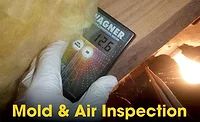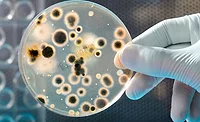Don't Get Lost in the Fog: Mold Remediation & IAQ Innovations

Photo: ra2studio / iStock via Getty Images Plus
As a mold remediation or indoor air quality specialist, there exists a huge array of products that we have available to us. With so many on the market, what do we need to know about these products in order to perform our function in a professional, effective, and most importantly, safe manner?
Each product may have different dilution rates for each distinctive mold, bacteria, and/or biological contaminant that they may be targeting. There may also be different dwell times for each contaminant you are attempting to remove. Without specific training for each product, blindly applying them to the building atmosphere is a recipe for disaster.
Another problem, with serious consequences, is the practice of fogging into the air mold remediation chemicals that were not designed, formulated, or tested for this type of application. Take the use of hydrogen peroxide. Fogging hydrogen peroxide can pose a variety of serious problems such as corrosion, discoloration to soft furnishings, and health risks. These risks can not only affect the applicator of the product, but also the occupants of the building upon return to the environment. So, if you are currently fogging a chemical agent into the air, does your product label specifically state it is designed for that use?
Many products that are EPA registered achieve their registration under the Pesticide Act; and countless of these are not recommended for fogging indoors. If you are using an EPA-registered product in a fogger, this may be in direct contravention of the law and can be very dangerous for your customer. You will also be required to have a pesticide application license to apply any product that is registered under the Pesticide Act.
As a professional remediator, it is your responsibility to ensure that your company operates within the law. You may receive a sample product from a well-meaning vendor, or purchase a product that is readily available over the counter at a chemical supplier or big box store, but that certainly does not mean you should blithely begin fogging it at your remediation projects.

Photo courtesy of Goldmorr
You need to research its contents, registration, and approved uses. Remember, the liability is yours. You cannot count on the sample sender or retail outlet to provide you liability protection if you use a product other than for its intended/designed purpose. And most importantly, are you willing to risk the safety of your customers by failing to be in compliance with the manufacturer’s guidelines?
As an additional consideration, how effective is our chosen remediation product in accomplishing our intended purpose? Our aim should be to return the air to a normal level, for which there is an international standard. This standard outlines acceptable levels of particles in the air, referenced to, among others, the ISO (International Standards Organization) Standard and WHO (World Health Organization). Mold spores are hydrophobic (like Teflon), meaning they repel or fail to mix with water. Anything water-based will not stick to water droplets, so fogging a water-based product (with or without a pesticide) will have very little effect.
In addition, EPA-registered products that are fogged into a lived in environment must have a clearance test to ensure any toxic ingredients are not left in the air to be breathed in by the building’s occupants.
Fortunately for today’s remediation professional, there are products available that have been chemically-engineered to create osmosis (a process by which molecules of a solvent tend to pass through a semipermeable membrane, from a less-concentrated solution into a more-concentrated one, thus equalizing the concentrations on each side of the membrane), which is a passive transport of the spore into the water droplets. Also, utilizing/employing a super cationic (any positively charged atom or group of atoms) process is the most effective way to scrub the air clean of mold spores and other airborne contaminants, since most single-cell microorganisms (like mold) are negatively charged. Opposites attract; and the positive charges from a cationic process will attract and capture the negatively-charged spores and other-related airborne contaminants.
Remember, to do a professional, effective, and safe mold remediation of your customer’s building environment, especially its air supply, use the right products the right way. Visit www.goldmorrusa.com for more information on our cutting edge mold remediation system.

Photo courtesy of Goldmorr
Looking for a reprint of this article?
From high-res PDFs to custom plaques, order your copy today!







